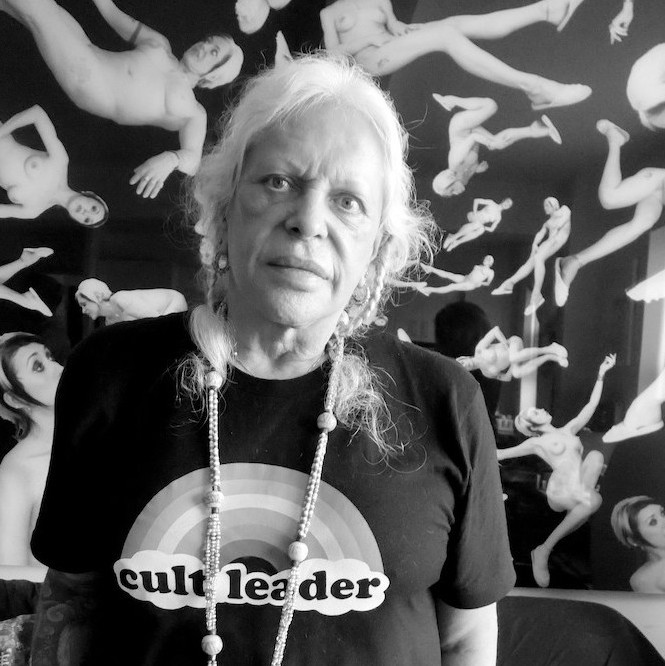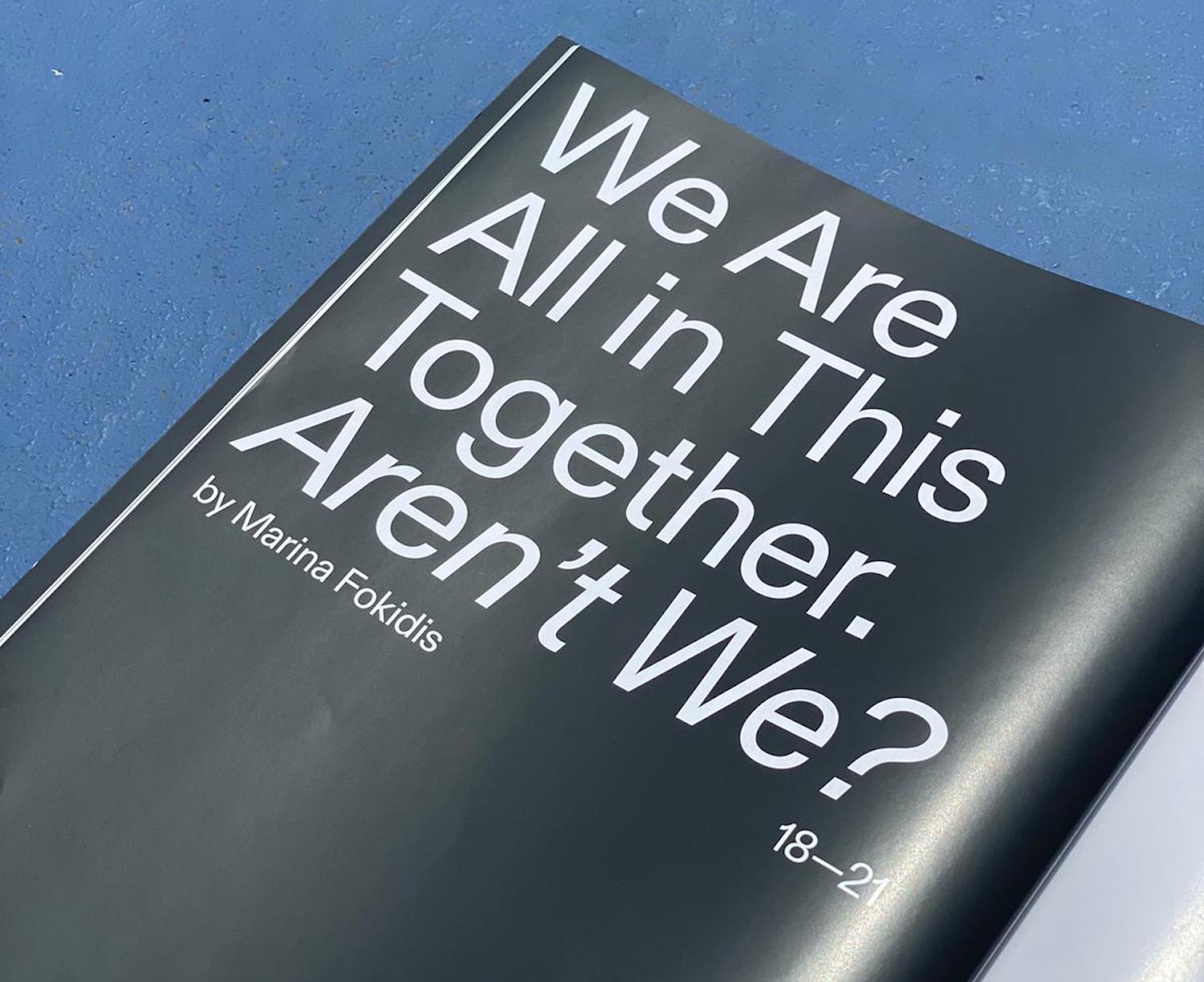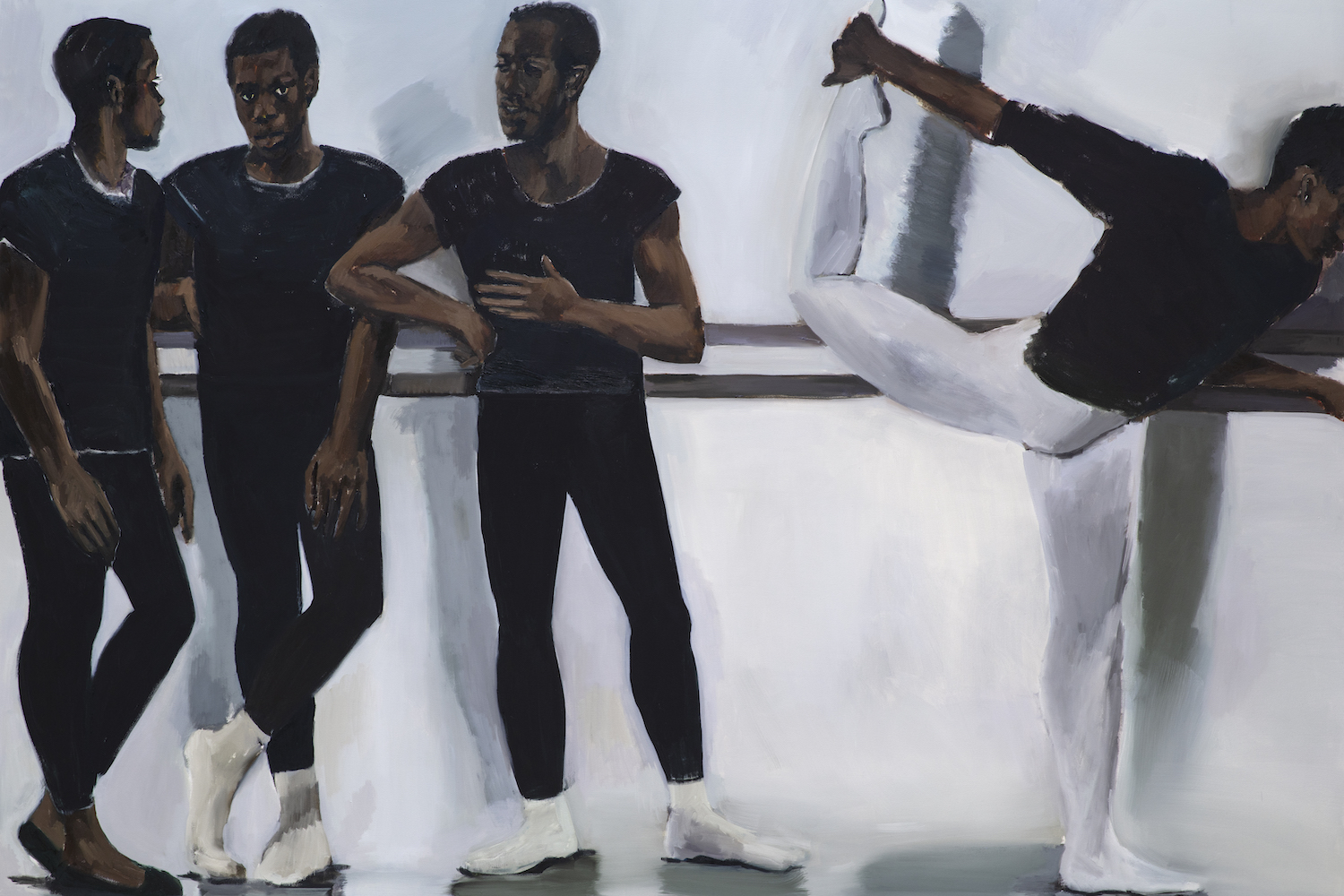“She jumps from the second floor to avoid being beaten.”2 Chased by her drunken lover, with a blood alcohol level of 2.48 g/l, a forty-seven-year-old woman leapt out of her apartment window. This is a news story from the daily household round in the days of the COVID-19 pandemic.
Underpinned by the movement of that fleeing body, this article tries to avoid being subjected to the pathological narrative of the health crisis.
It questions the lockdown using a news story that contradicts it. It tries to understand the dramatic mainsprings of “social distancing” in the form of the “watchword” that governs us, and in relation to the aesthetic figure at the root of modernity, whose use is refreshed by several authors analyzed here.
The Enlightenment philosopher Denis Diderot opened up a new vista with “household dramas,” which contrasted previous aristocratic and divine narratives. By reducing the interior of the bourgeois living room to a one-off dramatic space, he made the unity of place the drama’s mooring. The stage thus became a laboratory enlightened by observation of facts, words, and gestures threatening to cause the breakup of a family unit. To achieve his purpose, Diderot hemmed in the bourgeois stage space by erecting a fourth theoretical wall.3 This distancing technique was the seminal act of the realism that also spread to the painting of that period, with figures and groups, seen from behind, forming a passable barrier to the viewpoint offered on the painted surface, the better to give the viewer — become voyeur — the sensation of taking by surprise an unfolding scene. But this technique was not used to heighten illusion. On the contrary, the “paradox of the actor” was the second distancing procedure, consisting of breaking with the spectator’s expectations of the actor’s performance by favoring the conditions determining it.
Diderot explained that, strictly speaking, it was no longer characters who must be put on stage, but conditions. The condition must now become the main object, with the character just the prop. It was the condition, with its duties, advantages, and difficulties, which must act as the basis of the work.4
The Brechtian distancing effect extended the paradox — that counter-attitude in relation to the doxa of the incarnated performance — defined by Diderot’s “sens froid” (literally “cold sense”). A great actor is one who acts with sangfroid (loosely translated as “composure” or “cool-headedness”), written as sens froid in the eighteenth century. For Bertold Brecht, this method of making the actor a subject (subjectification) was aimed at producing an image giving a “historical definition” that “will retain something of the rough sketching which indicates traces of other movements and features all around the fully-worked-out figure.”5
As far as subjectifying the spectator was concerned, he explained: “Here is the outlook, disconcerting but fruitful, which the theater must provoke with its representations of human social life. It must amaze its public, and this can be achieved by a technique of alienating the familiar.”6
Like Diderot, Brecht grappled with the gap that separates the stage from the stalls, but Brecht lamented the fact that they were on a different level, whereas Diderot emphasized the heterogeneity of the two territories: “The theater as we know it shows the structure of society (represented on the stage) as incapable of being influenced by society (in the auditorium).”7
By miscasting the philosopher who created the encyclopedia, Brecht broke the fourth wall by giving the spectator the power to seize the plot.
This called for an acting method that left the onlooker’s mind free and mobile. The way of underscoring the separation and filling in the gap between stalls and stage was just dramatic tactics adapted to the historical context. For Diderot, it was peculiar to the disciplinary system whose archetype was the panoptical architecture divided into cell-like spaces. For Brecht, it was typical of the biopolitical age, with the free plan8representing its figure of construction making the supporting walls obsolete. What was significant was the strategy of realism shared by the two playwrights. This took the form, in Diderot’s work, of a display of “conditions.” Conditions, meaning trades, for which the Encyclopédie was the living resource, and family relations, whose vicissitudes were beginning to be reported by illustrated magazines, were replacing classical “characters.” For Brecht, this strategy forced the actor to make the very act of showing an artistic act.
The strategy of realism grappled with social government (gender- and class-specific) and the system of bewitching the gaze insidiously introduced by the powers that be, whomever they might be, by grasping the contingencies (tools, rites, etc.) that made their exercise possible.
Diderot’s sangfroid and Brecht’s distancing were consequently not neutral stances: “For art, being impartial quite simply means that one belongs to the dominant party.”9 If Diderot recognized the authors of the stories he depicted in the new middle classes, rather than in ancient mythology, Brecht associated all the trades in the production of the work: “The fable is explained, built, and displayed by the theater in its entirety, by the actors, set designers, make-up artists, costume designers, musicians, and choreographers. They all invest their art in this shared undertaking, but without abandoning their independence.”10 As far as the spectator was concerned, both Diderot and Brecht encouraged a mastery of the semiotic and somatic, or bodily functions that construct the drama, so that the audience could fully participate in it: “The spectator must be able to interpose his judgment.”11
In the eighteenth century, Diderot would have driven the plot of the COVID-19 household drama that introduces this essay and turned it into a picture of the family unit. He would have written in prose about the middle-class scene of a disciplinary age instead of Racine’s verses, which were recited on the proscenium by the aristocratic heroes of the sovereign system of governance. In the twentieth century, Brecht, for his part, would have adopted a more detailed biopolitical viewpoint, to bring forth the drunken words of proletarians in contrast to literary language. By being realistic in our turn, it is possible, at the neoliberal stage of our day and age, to see in this tragic defenestration the expression of — and at the same time the resistance to —the “index of household consumption” that we are forced to subscribe to by governments in power. Because this COVID-19 crisis is merely exacerbating the phenomenon of advanced capitalism — the digital lockdown already in effect before the virus appeared — to prepare us for an acceleration of its process of inevitable (contact-free) fragmentation effected by the third industrial revolution.
Semiotics of the Household, 2018
Flashing lights go on and off in the still-blue Manhattan night. In the video’s last scene, which re-creates a Georgia Sagri performance in the middle of Hester Street, in SoHo, in November 2018, New York City policemen unshackle the wrists of the artist they have just arrested, reminding her that she must have prior authorization to perform in a public place. That afternoon, the artist, whose performance was announced as taking place in Essex Street gallery, decided to break with the expectations of a captive contemporary art audience. She took the step of performing outside the exhibition venue, which uses preestablished codes to assess any act taking place within it. On the other hand, she offered her gestures both to passersby and to people visiting the gallery, who crossed paths with her on their way. For three hours, she would conscientiously carry out repetitive tasks in compliance with her program. Plunging into a bustling throng, Sagri pursued her course, no more no less, which every person in the street adopted at that time. The artist began by dragging her suitcase on wheels behind her along the sidewalk, the way all low-cost transport users and other people do to get to their private rental accommodation. For a period, which the video12 only re-creates one hour of — in keeping with the video captured by people who witnessed the scene, who gave these sequences to the artist — Sagri came up with several procedures to shape the behavior of the neoliberal individual. Her conduct stemmed from an economic analysis, responding in a systematic way to alterations in the environment’s variables. She would start by gauging the weight of her luggage, held vertically in relation to the body, before giving it a horizontal trajectory along which, after having launched it, it would come to a standstill through its own inertia. Like an investment portfolio, she took her kit (clothes, a make-up bag, props) out of her luggage and lined it all up on the public thoroughfare. This exercise would be repeated several times in different directions, to underscore or, conversely, withstand the dynamic peculiar to the urban environment she was in. The market behavior whereby everyone pursues their own agenda was just a foothold, akin to the skateboarder she crossed paths with, cars parking or slowing to let her past, and sanitation workers collecting rubbish. Sagri’s somatic exploration controls the movement of a scene based on a mistimed rational order, whose aberration can only be interrupted by traffic police.
The semiotics of the household space faced by the artist are no longer reduced to the kitchen area, or even to a gender or a particular minority, as was the case in Martha Rosler’s Semiotics of the Kitchen (1975).
The semiotics of subjugation (subject, individual, I) and the somatics of enslavement (strength, power, bond) are part of the same disconnected economy. The living body, which gives material form to the crossroads of the semiotic and the somatic (index, individual, institution), is not attached to any specific site; it is nomadic and reactive, based on the circumstances of a state of emergency or a period of growth.
Géographie-Cincinnati, 2020
The exhibition “Confinement: Politics of Space and Bodies,”13 which closed in March 2020 at the Cincinnati Contemporary Arts Center, brought together works which dealt with inhabitable and hostile environments, with Samuel Beckett’s play Happy Days (1961) — the heroine buried up to her waist was depicted by the playwright in her daily routine — possibly regarded as the matrix. The exhibition extended the effects of protection and coercion, deliberate and involuntary alike, caused by different situations of confinement whose political dimension was complicated and explained by the artists. The work Geography-Cincinnati (2019),14 presented on that occasion by Annie Vigier & Franck Apertet (les gens d’Uterpan), was a score for a group of dancers, conceived on the basis of the spatial constraints of the space accommodating them. It was the fifth activation of the protocol of this work that followed, inter alios, the one presented in Athens in 2017 during documenta 14, and the one presented at Museion in Bolzano in 2013.15 The dancers were recruited in the country in which the work was presented.
After incorporating the dance piece as a reaction to its social and symbolic environment, the perimeter on the floor occupied by the performers’ movements was demarcated by the kind of temporary walls usually available in art centers.
The exhibition space where this blind architecture was presented was accessible to visitors during opening hours. The presence or absence of the dancers within it corresponded with a rhythm that was not communicated but only perceptible by way of sounds and vibrations produced by their movements inside the hermetically sealed form. As a dance piece, this work favors haptic and acoustic dimensions over the optical dimension, which is the main channel for transmitting movement to the theater, as confirmed by the word’s Greek etymology: theatron, a place for viewing. The mobility imposed by this work on audience and dancers alike, as living sculpture, in the exhibition space, and the attentiveness it calls for, require a physical investment that questions the asymmetry of the bodies present. The strategy of the fourth wall is taken to the breaking point. The neutralizing effect of visual distancing contradicts the local geography of the movements and gestures made by the dancers recruited from the human resources of the area hosting the work.
With Semiotics of the Household, Georgia Sagri creates a paradox of performance, a counter-attitude in relation to the doxa of the exhibited presence. She deconstructs the head-on nature of her action by synchronizing it with the continuum of events in the public place. Her attitude simply becomes the foothold, the protrusion offering a hold for the power plays it displays. The reinstatement of the asynchronous rhythms that inform the public place can only be a collective production, as attested to by her edited video using sequences provided by the witnesses present. The distancing effected by the “geography” protocol defined by les gens d’Uterpan informs both dancer and visitor. It demonstrates that it does not suffice to have your eyes open to stir the gaze and encourage varied viewpoints.
The strategy of these artists forms an alliance with the realism of their predecessor, by the paradoxical use of the distancing tactics introduced by their procedures.
Their “conduct of conduct”16 matches those of a critical curatorial praxis, by being based on the same neoliberal archaeological ground that reviews established categories and redistributes relevant contrasts. But the paradoxical utterances made by Sagri and les gens d’Uterpan do not converge on the homogeneous surface of the market; quite the opposite. Their works accentuate or seal the deep gap between market shares — not to ratify them, but to challenge the principle. Sagri’s household production unit is uninhabitable. It is denounced as the online home, favoring generalized telecommuting. For les gens d’Uterpan, the smallest social unit is not the abstract individual, but the palpable and tangible group. The living elevation of the white walls of the white cube that they present vibrates on either side of a line that has no back or front. Homo oeconomicus is a banking representation whose fate is to die alone, incinerated.




